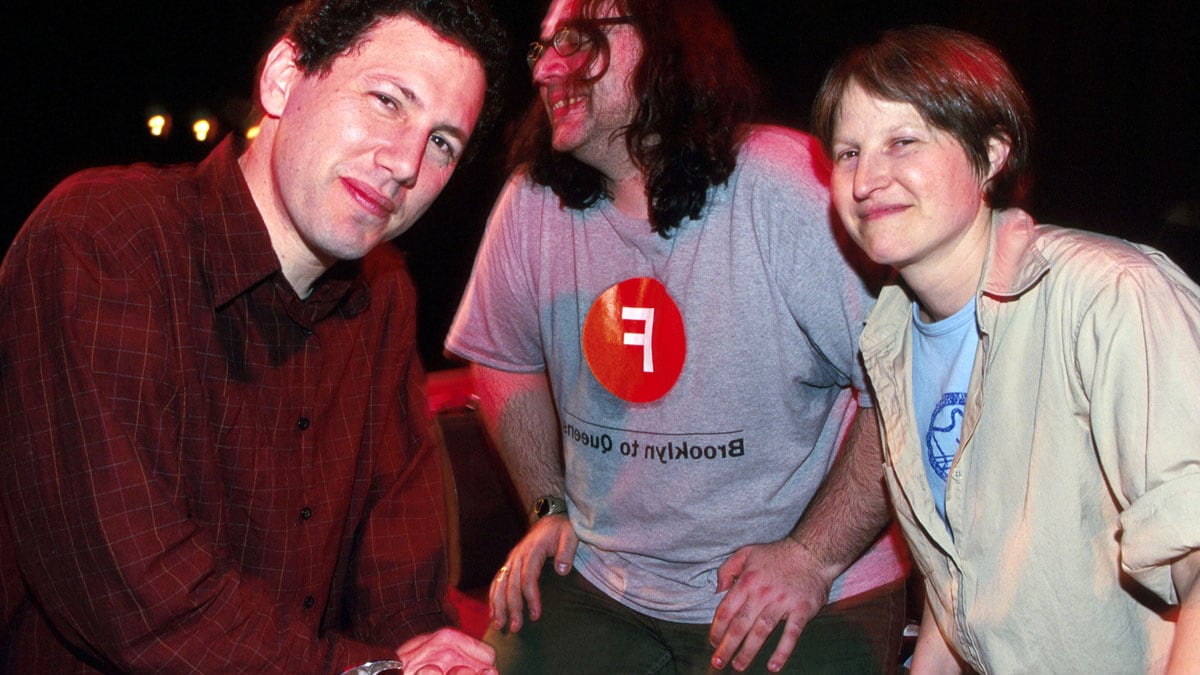One night in the late 1980s, not long after Yo La Tengo’s Georgia Hubley and Ira Kaplan got married in a quaint, low-key city hall ceremony, the couple returned to their Hoboken home to discover strange houseguests lounging on their pull-out couch.
The two were invited by roommates, but Hubley was annoyed that they had let her cats outside.
“Who are you?” she demanded to know.
“We’re Mudhoney,” they replied.
The groggy pair would go on to become defining members of Seattle’s grunge scene.
Rock ‘n’ roll history is filled with tales far more debauched than the peeved-over-a-cat meeting of two famous alt-rock bands. But the understated nature is exactly the appeal of Jesse Jarnow’s Big Day Coming: Yo La Tengo and the Rise of Indie Rock—it mirrors the music it writes about. The book is crammed with these hushed anecdotes, which Jarnow relays with the breathless urgency of a nerdy record store clerk.
The term independent rock was initially used to describe alternative bands signed to small, almost amateurish record labels. But even when those imprints were purchased by major labels, the title stuck, and it eventually morphed into a genre tag to describe under-the-radar acts that might once have been deemed “record collector” bands for their relative obscurity. Yo La Tengo was one of those bands, eventually signing to tastemaker Matador Records. (Which was later purchased by Atlantic.) The book focuses on the band’s long and rather unglamorous career, which foreshadowed an endless stream of scrappy, hardworking rock bands that were among the first to grapple with transitioning to a post-album world.

Kaplan grew up in suburban New Jersey as an obsessive music fan, falling in love with the Beatles and the Kinks and plotting trips to the city to see live music. He bought a Fender Stratocaster guitar when he was young, but it remained untouched in his room for years. He entered the business not as a musician, but as a journalist, first with his school paper at Sarah Lawrence College and later at the (now defunct) New York Rocker. But it was on assignment for the SoHo Weekly News covering rising New York bands who were playing in London that he met the 20-year-old Hubley, who had flown there to attend the show. The concert tanked, but the two became inseparable from that moment on, eventually moving into the Hoboken house where, years later, they would startle the sleepy grunge pioneers.
Hubley’s Upper West Side family was fascinating. Her father began his career working under an emerging Walt Disney, and together with her mother ran an animation studio, earning eight Oscar nominations for their work. Hubley and her sister occasionally provided inspiration and voices for their films, and she went on to study visual arts in college, where she also learned to play drums.
Kaplan and Hubley talked about making music together. But it wasn’t until a friend at the Rocker coaxed the painfully shy couple to jam at the photo editor’s birthday party that they finally played a loose, boozy, laid back set in front of a crowd, ending the night with a cover of California punk band Flipper’s “Sex Bomb.” (The lyrics: “She’s a sex bomb my baby, yeah,” repeated endlessly.) Someone snapped a photo of the group and scrawled the caption: “Photo editor Laura Levine celebrated her 24th by inviting her weirdo friends to speel beer on the NYR office and play some dubious ‘music.’”
The two loved it.
They would get their next chance to perform as “Georgia & those guys” at Maxwell’s, a low-key Hoboken restaurant and concert venue to which the band still has ties. (Its semi-annual Eight Nights of Hanukkah series, featuring surprise musical guests and comedians, has taken place there for a decade.) The establishment’s history figures prominently in the book, a tribute to it being a constant hub for the small city’s music scene. The Jersey City radio station WFMU is similarly celebrated, its plight and successes woven in alongside the band’s. (Jarnow hosts a show at the station.)
In 1984, they came up with the name Yo La Tengo, a phrase New York Mets centerfielder Richie “Whitey” Ashburn would shout to his Spanish-speaking shortstop, Elio Chacon, in an attempt to avoid collisions. The band’s noisy, self concious first shows under their constantly misspelled name were not well received. Gerard Cosloy, who would sign the band to his Matador Records years later, criticized their early shows. “I was hardly the sort of person to be nitpicky, but the level of musicianship was not exceptional at that point in time,” he told Jarnow.

But Kaplan and Hubley honed their craft playing a range of punk, surf, and rock covers, culling influence from each genre and developing their own distinct, arty sound, eventually marked by lush vocals and a measured blend of melody and noise. They slowly mixed in originals and vowed never to offer the same set twice. They had a rotating cast of bass players—14 in total—until James McNew permanently joined in 1991, well into the band’s career.
Their story is not especially remarkable. The group faced the same challenges as any ambitious touring band. Jarnow plows through in earnest, chronicling each album and the resulting step forward. A miserable tour through a freak Texas snowstorm was followed by a cantankerous soundman in Albuquerque who became furious at Kaplan for setting a microphone below the stage on the floor, but these lows led up to the news that their album President Yo La Tengo had cracked the college music charts for the first time.
That’s as big a breakthrough moment as you’ll get in Big Day Coming: just modestly successful record sales (peaking at 300,000 for I Can Hear the Heart Beating As One, immediately before piracy began to wreak havoc on the industry), a loyal following, and a career spanning 25 years. But that is the point.
Kaplan and Hubley are obsessive foodies who enjoy puzzles and shouting the answers to Jeopardy! This is hardly the sex, drugs, and rock ‘n’ roll we are used to. The subculture they inspired is not goth but blogs. (Or, in the beginning, do-it-yourself magazines.) Yo La Tengo’s persistent dedication and small-label affiliation might have earned it the title of indie rock pioneers, but it’s its distinct sound—guitar-driven experimental rock and fondness for jangly fuzz—that keeps them relevant in the genre today.
The band was born in an era before Pitchfork’s Best New Music stamp of approval (on literally hundreds of bands), before every band name sounds the same and a different one is considered “in” on any given week, before teen soaps functioned as radio or the concept of selling out became passé, as Jarnow points out in his whirlwind conclusion. Kaplan and Hubley have managed to thrive amidst two and a half decades of change. That doesn’t necessarily make all the details of their story interesting, but considering the current easily-forgotten state of the music industry, it makes them unique.






